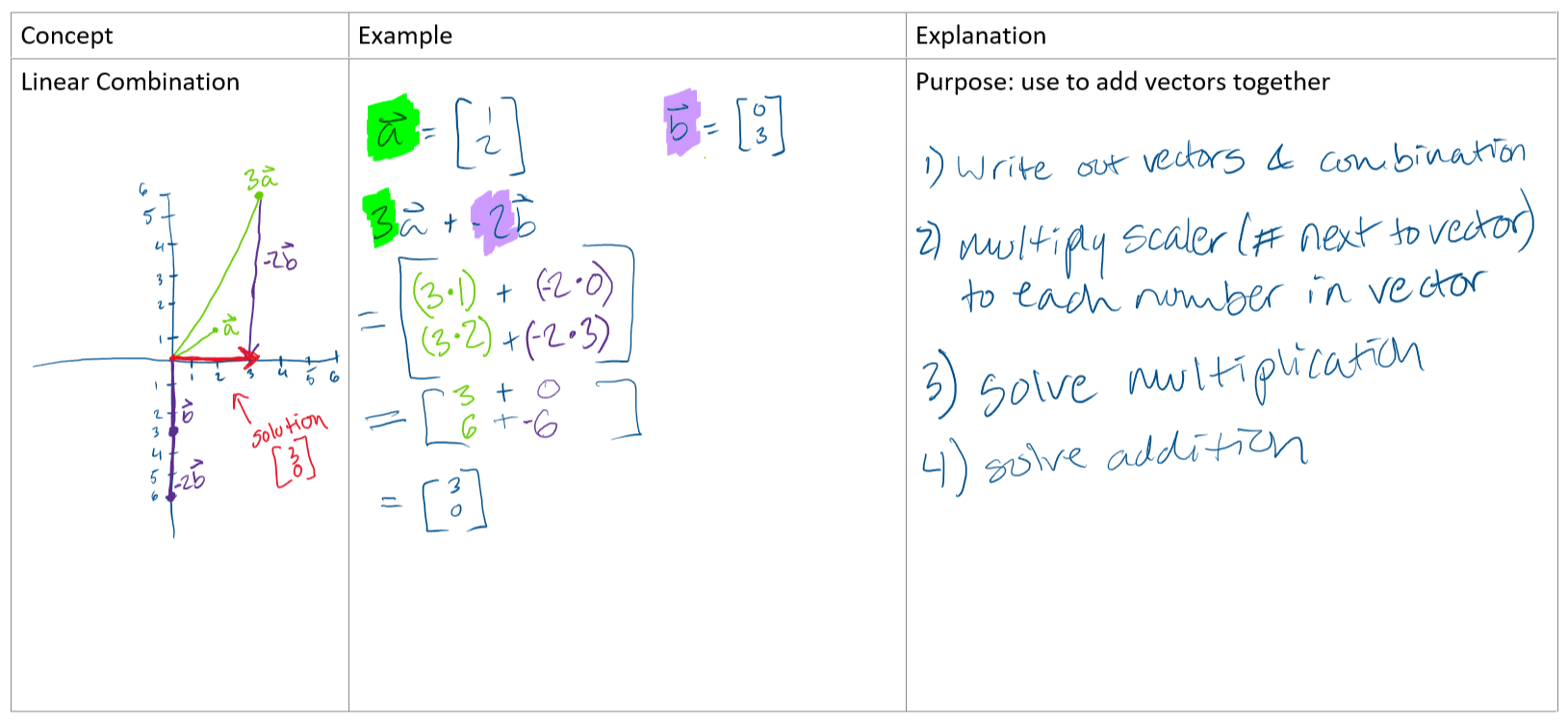3 Column Notes
Note taking strategy for math. Created by Marlene McIntosh.
Column Notes
Column notes is a great way to take notes during class and can also help you learn math concepts by clearly outlining the steps to solving formulas. This can later be used to help remember the steps involved in solving various math problems.
Steps:
- Draw 3 columns on your page or use the 3 Columns Template.
- Record equations and each problem step in the “Example” column (i.e. cos A = b / c). Try using colour coding for each step to help emphasize the difference between the steps.
- Write the theory or principle related to the equation presented (i.e. SOH, CAH, TOA). If this isn’t clear during class, you can do it after class.
- Write an explanation for the equation (i.e. when to use, why, verbally explain each step in example column).
- Mark (i.e. star, question mark, exclamation point, heart) concepts that you don’t understand. Update this as you review and understand concepts better.
- Fill in gaps and rework notes within 24 hrs of your class.
- Add concepts from the textbook and course readings to your column notes.
Examples:
|
Concept/Rule |
Example |
Explanation |
|
BEDMAS |
24 + 77 ÷ 7 – 2(5 × 3)
|
5 x 3 = 15
24 = 16
77 ÷ 7 = 11
|

Picture showing linear algebra example. First column shows an illustration of linear combination. Second column shows an example of the formula. Third column presents an explanation: Purpose: used to add vectors together. 4 steps are laid out.